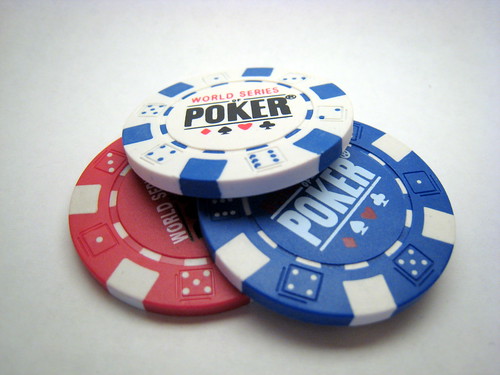The blue chips of Singapore:
Blue chips usually refer to those companies that are very large and are typically the component stocks of a country’s key stock index. In Singapore, the blue chips are the 30 companies included in the FTSE Straits Times Index. Together, these 30 stocks represent the top 30 listed companies in Singapore by market capitalization and can capture the broad movements of the entire stock market in Singapore. For the latest list of companies within the STI and their recent closing prices, CashBench readers can refer to this page of the Business Times. But, not all blue chips are created equal. Which companies in the STI index should CashBench readers really take note of?
The two bluest chips on the Singapore Exchange:
Would you love to hold onto the shares of a company that consistently performs well in good times or bad. On the Singapore Exchange, there is indeed such a company based on past price movements. After analyzing the performance of all the STI stocks on a 1-year, 3-year and 5-year basis, there are only two companies that consistently ranks within the top 3 performers. They are SGX, the Singapore Exchange itself, and Jardine C&C! These 2 companies provide a positive annualised return, whether you are a shareholder of these companies for just 1 year, 3 years or 5 years. Take Jardine C&C for example, the return for a shareholder for the past 1 year is a respectable 10.50%, that’s really very good compared to the losses we’ve experienced from many other companies over the same period, even the blue chips! Over a 5-year period, the annualised return for Jardine C&C is 24.2% and 35.8% for SGX. To put this into perspective, if you have held these 2 companies for the past 5 years with an initial investment of say $5,000, it would have grown to $9,579 for Jardine C&C or $12,522 for SGX!
There is only ONE company that consistently … performed well based on a raw and risk-adjusted basis over the past 1 year, 3 years and even 5 years.
The only blue chip with a consistently top Sharpe ratio:
Recall in our earlier introduction that the Sharpe ratio is a good indication of the risk-adjusted performance of a company. Not only does it consider the raw performance of a company but also take into account how risky it is to be a shareholder. Using Sharpe ratio as a measure, there is only ONE company that consistently generates a Sharpe ratio among the top 3 of all STI companies. That company is again SGX. This means that on a historical basis, the SGX has performed well based on raw and risk-adjusted basis over the past 1 year, 3 years or even 5 years.
The favourite companies of punters?
Finally, CashBench will also highlight those companies within the STI that are subject to more volatile price swings relative to the other STI companies. Recall that higher volatility will mean these stocks will be more risky to invest in. Because of their higher volatility, these companies may be subject to more frequent trading by punters of the stock market, who will be less likely to hold onto them over a long period. Instead, the stocks are ideal for those who enjoy trading on a more frequent basis to capture those short-term periods where they enjoy an upward trend. The company that is consistently one of the top 3 volatile stocks among STI companies on a 1-year, 3-year or 5-year basis is NOL. Examples of other companies that also tend to have higher price volatilities include CapitalMall Trust, Golden Agri, Cosco Corp, Genting and Jardine C&C.
Notes: This analysis is based on historical price data for the current 30 STI companies up to 26 Jun 2009. Dividends declared or paid by these companies are not taken into consideration. STI companies not quoted in Singapore dollars are also excluded from analysis. The risk-free return for the Sharpe ratio is based on an average rate of 0.25% per year with deposit savings accounts. As usual, this analysis should not be taken to represent a solicitation to buy or sell any particular stocks in the STI.

Your comments?
How about putting up your portfolio and track record? You must have one since u have been managing money for 5 years. It will be very interesting to follow the portfolio progress, don't you think?
Dear friend, thank you for your comments. CashBench has been online since Jan this year and you may wish to refer to the earlier entries posted here. This will give a rough gauge of the analysis carried out and how close or far away they are from actual events. CashBench will also be carrying out more formal updates of past analysis at suitable intervals.
Beyond that, there is no model portfolio suitable for all investors. For that reason, CashBench does not have a "model" portfolio to share. Portfolios can however be useful for style, sector or country-specific performance. The best source for such portfolios is the holdings in unit trusts, ETFs, major stock indices, and business dailies like the Business Times.
Perhaps you have more to share yourself. If you wish to exchange ideas on investment tips and news, or even be a CashBench guest blogger, do contact me via e-mail for more. Have a great day.
Post a Comment